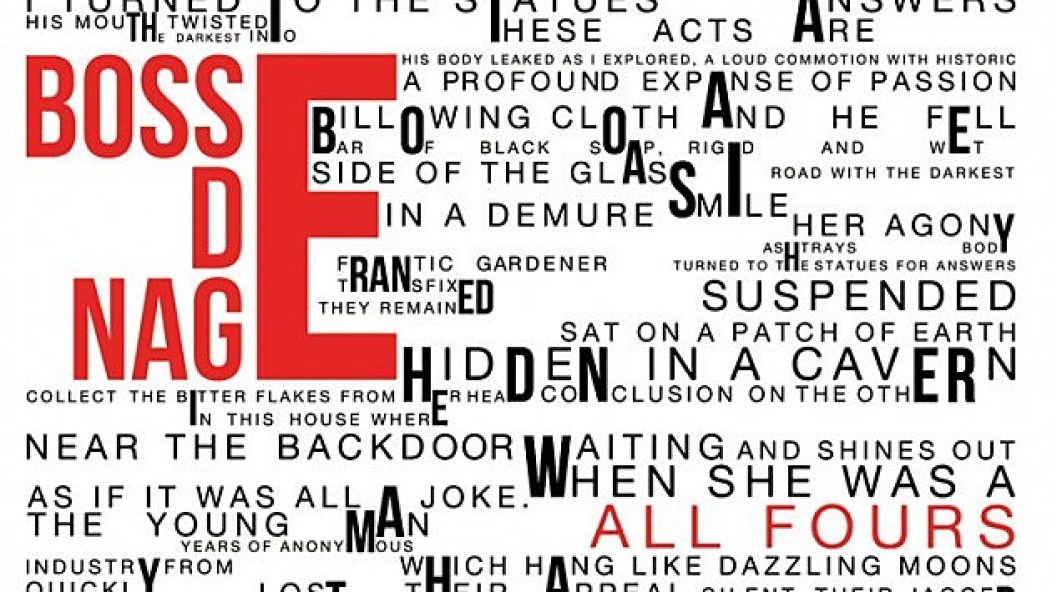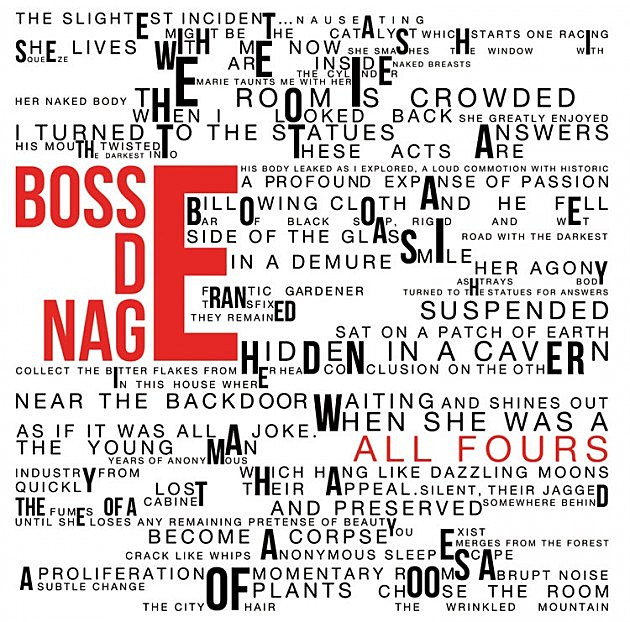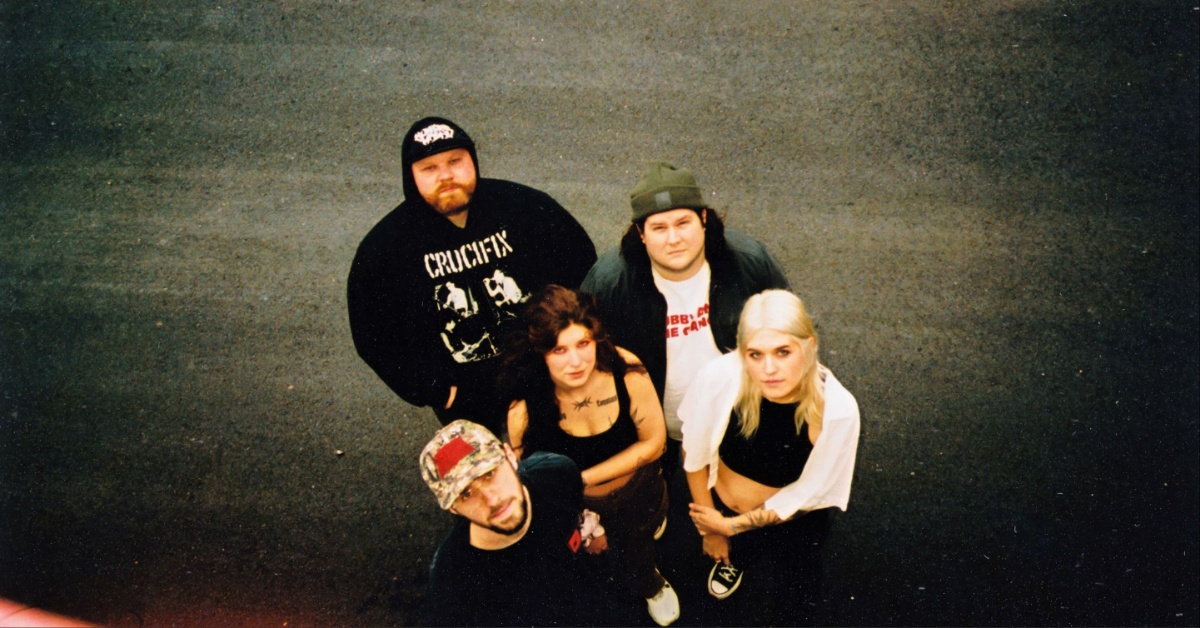
Top Albums of 2015, by Ian Cory
…
2015 was my first full year writing for Invisible Oranges. I had spent the previous two years blogging about a wide range of genres, taking a crack at any record I could get my hands on or successfully pitch. My listening habits in high school and most of college had been dominated by heavy music, but I had largely put the genre to the side over the last few years in order to broaden my horizons and gain a more balanced perspective. As a result, shifting my focus back to a metal-centric outlook had a bit of a learning curve. I had to split my time between staying up to date with the current releases and reacquainting myself with the metal canon as a whole.
This is why my body of work focused so much on some of metal’s most entrenched touchstones. I wanted to find my way back into metal culture by approaching its legacy acts—your Iron Maidens, Meshuggahs, and High On Fires—from a new perspective. I wanted to remind myself why I liked these bands so much, and establish a context through which to view the cutting edge of the present. At the same time, I didn’t want to get sucked into the conventional wisdom of the culture. The last thing metal needs is to get stuck in a feedback loop of the same prejudices, lazy concepts, and nostalgia (for technology or music) that have dominated its discourse lately.
I was pleased to see that this poking and prodding garnered both positive and negative reactions, but more than anything I enjoyed re-engaging with heavy metal’s most essential elements. There is nothing like the thrill of a good thrash break, the rush of a well executed harmonized lead, or the feeling of being thoroughly outsmarted by a band. It was a delight to find myself in a scrunched up “riff face,” even if it earned me some odd looks on public transportation.
These are universal joys in the metal community. Maybe it’s a symptom of my years in the poptimist trenches, but heavy metal is most fun to talk about when it doesn’t actively exclude most of its audiences. I mean this in both a political sense, which I’m sure some of my colleagues can tackle better than I, and a general one. There is no conversation more boring than two people trading “have you heard of ‘obscure band x’” back and forth. I would rather talk about something less ‘cool’ if it means that everyone can be involved in the conversation. There’s a balance to be struck here, between keeping the discourse fresh with rising acts and keeping it as inclusive as possible. Finding that balance will be a goal for the upcoming year. In the meantime, here’s a look at twenty records (ten metal, ten very much not metal) that I enjoyed this year.
…
10 Non-Metal Honorable Mentions (A balanced diet is important!)
Kendrick Lamar – To Pimp A Butterfly (Top Dawg Entertainment, USA)
Beach House – Depression Cherry (Sub Pop, USA)
Vince Staples – Summertime ‘06 (Def Jam Records, USA)
Low – Ones & Sixes (Sub Pop, USA)
Bjork – Vulnicura (Megaforce, Iceland)
Joanna Newsom – Divers (Drag City, USA)
Carly Rae Jepsen – EMOTION (Interscope, USA)
Oneohtrix Point Never – Garden Of Delete (Warp Records, USA)
Chvrches – Every Open Eye (Glassnote Entertainment, USA)
Holly Herndon – Platform (4AD, USA)
…

10. Cult Leader – Lightless Walk (Deathwish Inc., USA)
I’m such a mark for this kind of record that it almost feels unfair to other bands to put this on my list. Any record made up of hyper-aggressive metallic hardcore punctuated by squalls of feedback and the occasional “spooky guy” speak-singing sludge track is going to get a lot of play in my rotation. Deathwish Inc. put out at least five albums a year that fit that description, and they almost always hit the spot. Cult Leader are all veterans at this point, having all paid their dues in Gaza, so it’s no surprise that they would nail this style so quickly on their debut record. What elevates Lightless Walk above Deathwish Inc.’s already high standard is the brilliance of Casey Hansen’s drumming. Where others would have been content to blast and d-beat these songs into oblivion, Hansen finds new angles constantly, bending each song into new meters and polyrhythms at will.
…

9. Windhand – Grief’s Infernal Flower (Relapse Records, USA)
Doom metal has a funny way of becoming soothing the heavier it gets. Enough low end rumble and sustain can push a record from crushing to oddly comforting. Grief’s Infernal Flower is without question heavy as fuck, but it’s less of a boulder than a massive enveloping blanket. Windhand don’t just rest on the strength of their tones. This record is built off of hooky and evocative songwriting, not just an impressive amp collection. It would be easy to point to the record’s softer moments as an example, but the same focus on melody that flows through Windhand’s ballads also serves as the backbone of their heaviest moments. Grief’s Infernal Flower is the complete package, a record that plays within the boundaries of genre without sacrificing its individual spark.
…

8. Horrendous – Anareta (Dark Descent, USA)
If you happen to be friends with a metal blogger, chances are you’ve already had your ear talked off about Horrendous. They are metal twitter crack. No gimmicks, no overproduction, no real connection to any current trends or scenes and no narrative to speak other than rampant overachieving. In the space of four years, Horrendous have established themselves as American death metal’s premier power trio. Anareta has received some comparison to Death’s run of albums in the mid-90s, which is valid considering Horrendous’s technical acrobatics and refreshing sense of harmony. But what makes the resemblance truly striking is that like the dream teams that Chuck Schuldiner assembled, Horrendous feed off of the electricity of having a group of amazing musicians all in the same room, getting collectively psyched about the music they’re playing. It’s no surprise that the rest of the metal world is getting caught up in the same current.
…

7. Vattnet Viskar – Settler (Century Media, USA)
If there’s a recurring theme in this top 10 list, it is artists exceeding expectations. The majority of the records on this list are from artists that had put out good albums before, but made a leap into greatness this year. No band embodies that spirit of improvement better than Vattnet Viskar. Sky Swallower, their debut full length, was frankly a mess. The band were cooking with potent ingredients (the usual concoction of black metal, shoegaze and post rock, but with a more confident focus on rhythm) but hadn’t quite figured out the recipe. Settler is a different story. The songs here are tightly controlled detonations, blending the band’s influences into a single distilled sound. Where Sky Swallower was ponderous and meandering, Settler is immediate and direct. It evokes space travel, not just because of it’s goofy album cover or the band’s choice in song titles, but because the music feels both propulsive and weightless. Vattnet Viskar’s ascension from middling to excellent was meteoric, so it’s fitting that they sound like the launch of a space shuttle.
…

6. Panopticon – Autumn Eternal (Bindrune, USA)
It’s a testament to black metal’s growth in the last half decade that Austin Lunn’s approach to the genre feels anachronistic. Where are other black metal bands are rocketing through the solar system or wasting away in the sprawl of Los Angeles, Lunn has stuck to the forests and mountains that have served as the genre’s setting since near its inception. Lunn’s Panopticon may be out of step with the times, but that only helps highlight how damn good he is at evoking the majesty and melancholy of nature. Panopticon have grown from an insular and confrontational oddity into the best expression of the genre’s romantic tendencies. The songs on Autumn Eternal stretch out for miles, unfolding slowly and patiently. For anyone willing to follow Lunn down these winding roads, the payoff is immense: an overwhelming emotional release proves that metal doesn’t always need the newest bells and whistles to qualify as transcendent.
…

5. Chelsea Wolfe – Abyss (Sargent House, USA)
Chelsea Wolfe, like any great modern songwriter, is as much a manipulator of tone and genre as she is a crafter of melody. She has taken several forms over her career. The mysterious lo-fi folk singer, the moody electro-goth diva, and now the focal point of a suffocatingly dense doom metal band. This newest iteration is the best yet. Wolfe is more than just a stylist though. As she’s grown more adept at arranging, she’s also sharpened her songwriting. Her older material was often content to rely on a single hook without much development, which made it great for scoring trailers, but caused it to wear out upon subsequent listens. Not so on Abyss. Songs like “Survive” and “Iron Moon” are among the most powerful and expertly written in her entire catalog. Wolfe’s explorations of heavier tones doesn’t feel like a lark either. She’s always painted in darker hues, it’s only natural that pitch black would suit her well.
…

4. Black Breath – Slaves Beyond Death (Southern Lord, USA)
A brilliant piece of historic revisionism. By excising the ‘core’ from Entombedcore, Black Breath have imagined a version of metal history that skips the 2000s entirely, welding the sounds of Swedish death metal to the form of 80s thrash. Slaves Beyond Death is retro without sounding dated, partially because it draws from multiple eras at once, but mostly because Black Breath play with a wide eyed intensity that roots their songs in the present. Like pretty much everything else that Kurt Ballou touches, Slaves Beyond Death sounds impeccable and impossibly huge. But even the best production in the world would be just be set dressing if Black Breath didn’t deliver such a career performance here. By time Slaves Beyond Death reaches it’s conclusion with “Chains Of The Afterlife” it’s clear that the scope of Black Breath’s ambitions far outstripes that of their former contemporaries. They aren’t competing with the rest of the HM-2 & Orange Amp crowd, they’re gunning for Master Of Puppets.
…

3. Bosse-de-Nage – All Fours (Profound Lore, USA)
I’ve always had a fondness for also-rans and second placers. As fascinating as it can be to marvel at the “it” band of any moment (and we’ll get to them soon enough) there’s something equally satisfying in watching a band just outside of the spotlight. Bosse-de-Nage don’t draw nearly as much attention as American black metal’s golden boys (again, we’ll talk about them soon), and that relative obscurity has let them develop into a perfect foil to the “blackgaze” scene. Bosse-de-Nage plays through gritted teeth, eschewing reverb assisted haze for the sound of a rope pulled taut and ready to snap. All Fours sounds dried out and whittled down to a razors edge. Even when the band does open up into more straightforward melodies, the fury of their rhythm keeps the whole record one step away from tear itself apart. Whatever drives Bosse-de-Nage, whether it be an appetite for black metal’s throne or the carnal desire that serves as the inspiration for the lyrics, they sound ravenous on All Fours. Let’s hope they stay hungry.
…

2. Deafheaven – New Bermuda (Anti Records, USA)
At this point Deafheaven’s rise feels inevitable. The last decade has seen indie rock go mainstream and heavy metal embrace its inner art school dropout, it was a forgone conclusion that a band would find a way to ride both of those waves to massive success. If you look at it from that angle, Deafheaven happened to be the right band at the right time to light the zeitgeist on fire. These circumstances help grant Deafheaven an aura of rock stardom that rarely graces heavy metal anymore. They have maybe the best up and coming drummer on earth, a charismatic singer with an impressive jawline, and the decade’s highest profile metal release under their belts. Again, it feels inevitable they would go from sleeping in their cars to sitting next to members of the Big 4 on marquees (ok, sure it’s just Anthrax, but still).
And like every band that goes from rags to riches, they now have to face the uncomfortable question of what comes next. New Bermuda doesn’t offer any easy answers. It’s a record steeped in ambiguity. Where Sunbather evoked a sense of yearning that was universal, New Bermuda feels like the product of a worldview out of sync with itself. George Clarke looks through the doors that success has opened for him and found a wasteland of stifled communication and misspent ambition. Even at its most dismal, Sunbather was tinged with the hope of escape. In New Bermuda there is no way out. It’s softer moments feel like a cruel joke, scoring Clarke’s emotional flatline with a sneer.
As a collection of songs, New Bermuda isn’t as world conquering as its predecessor, but as a statement it is just as powerful, and proves that Deafheaven are working with a wider pallet, both emotionally and stylistically, than anyone gave them credit for.
…

1. Harm’s Way – Rust (Deathwish Inc., USA)
Rust presents the best case scenario of a hardcore band copying from the heavy metal playbook. Harm’s Way have distilled and condensed the innovations of Celtic Frost (and by extension, Triptykon) into a blisteringly paced rampage. Rust is an album with little interest in songwriting complexity. It is short and to the point. It has no flash and very little flourish, a quick atmospheric intro here, a moment of extra percussion there. Where many metal bands would have let these elements take the center stage at some point, Harm’s Way have a hardcore band’s sense of urgency. They never lose sight of their main goal; pummeling you into submission just a step before you expect them to. Heavy music works best when you don’t have the time to grow accustomed to it’s intensity, when you’re never allowed to be comfortable. Harm’s Way barrel through expectations. They disrupt. Rust is a blunt and ugly record, from a distance it would appear unrefined and even a little sluggish, but up close it is impossible to ignore.
…










